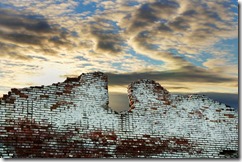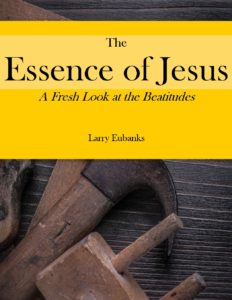
The Human Cost of Tabernacle and Temple, Part 2
 In the last post I wrote about how Solomon’s temple as well as the palace complex, which were all part of one big building project—was built on injustice: the forced labor and heavy taxation of most Israelites except the rich nobles around Jerusalem; the accumulation of extreme wealth by Solomon and those same nobles; alliances with pagan kings who brought their pagan influences into the temple; and a palace built for Pharaoh’s daughter, whom Solomon had married.
In the last post I wrote about how Solomon’s temple as well as the palace complex, which were all part of one big building project—was built on injustice: the forced labor and heavy taxation of most Israelites except the rich nobles around Jerusalem; the accumulation of extreme wealth by Solomon and those same nobles; alliances with pagan kings who brought their pagan influences into the temple; and a palace built for Pharaoh’s daughter, whom Solomon had married.
Conversely, the tabernacle is put forward as a shelter appropriate for the worship of God: appropriately but not extravagantly adorned with acacia wood, silver, and gold. No one was enriched by its construction, nor was anyone impoverished, much less enslaved. It was appropriate for a God who had just delivered a people who were enslaved by a wealthy elite class and forced to work on Pharaoh’s building projects. He was content with a tent.
The irony is that at the heart of the temple was the Ark of the Covenant which was housed in a tabernacle-like space consisting of the Holy of Holies and the Holy Place. In fact, Dr. Richard Elliott Friedman has persuasively if arguably proposed that the original tabernacle could fit inside the Holy of Holies. Regardless, the two-chambered room in the temple was reminiscent of the tabernacle.
Architectural details for Solomon’s Temple, which was destroyed by Nechadnezzar ca. 587-586 B.C.E., are not really known, but we know a great deal more about the second temple, the one that Jesus visited. We know that moving inward from the outermost courts it excluded more and more people. There was the Court of the Gentiles, which anyone could enter. Moving inward there was the Court of Women, in which Gentiles were excluded but all Jews, including women, were allowed. Only Israelite men could enter the Court of Israel, and only Levite priests could enter the Court of Priests, and only the High Priest, once a year, entered the Holy of Holies.
But here’s the thing: the Covenant Code (Exodus 20:19-23:33) provided for the inclusion and protection of people who would normally be excluded.
“You shall not wrong or oppress a resident alien, for you were aliens in the land of Egypt. You shall not abuse any widow or orphan. If you do abuse them, when they cry out to me, I will surely heed their cry.” (Exodus 22:21-23 NRSV)
The tabernacle itself could only be entered by priests, but that was understandable—it was a holy place where the priests acted on behalf of the people. But the tabernacle itself could be approached by anyone—not just men, not just Israelites, but even the aliens in their midst—Gentiles living amongst the Israelites.
Dividing people into groups is what leads to injustice, as it quickly leads to excluding them from rights they deserve and privileges the “in” group enjoys. The Covenant Code sought to eliminate that injustice. When Israel ignored those laws, injustice increased, and as injustice increased, so did God’s judgment on Israel.
“Father and mother are treated with contempt in you; the alien residing within you suffers extortion; the orphan and the widow are wronged in you….I will scatter you among the nations and disperse you through the countries, and I will purge your filthiness out of you.” (Ezekiel 22:7,15 NRSV)
It was this dividing and excluding that Jesus found himself fighting against in Israel, and was the main reason he found himself in opposition to the Temple leadership that ultimately crucified him. Jesus himself would have been content with a tent that all could approach.
“For he is our peace; in his flesh he has made both groups [Jew and Gentile] into one and has broken down the dividing wall, that is, the hostility between us.” (Ephesians 2:14 NRSV)
Our calling as followers of Jesus is to make sure dividing walls go down and stay down.
 I am a lifelong student of the Bible, and have been a pastor for over twenty-five years. My desire through this blog is to help people see things in the intersection of Scripture and real life that they might have missed. The careless handling of the Bible is causing a lot of problems in our churches and our culture--and is literally turning people away from the church, and, sometimes, God. I hope to treat Scripture with the respect it deserves, and, even if you don't agree with what I say, give you some insight.
Feel free to leave a comment. I promise to respond to you. All I ask is that you be respectful in your comments.
I am a lifelong student of the Bible, and have been a pastor for over twenty-five years. My desire through this blog is to help people see things in the intersection of Scripture and real life that they might have missed. The careless handling of the Bible is causing a lot of problems in our churches and our culture--and is literally turning people away from the church, and, sometimes, God. I hope to treat Scripture with the respect it deserves, and, even if you don't agree with what I say, give you some insight.
Feel free to leave a comment. I promise to respond to you. All I ask is that you be respectful in your comments. 
Connect with Me